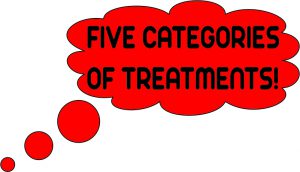Obviously if you are here, you are struggling with toenail fungus. I am so sorry that this condition has or is beginning to take over your feet.
So… what do you do now?
To put it simply… You MUST begin treatment immediately!
Are you now wondering if there are prescriptions to treat toenail fungus and if so, what type of doctor should you visit? Great news… I am about to tell you everything that you need to know!!!
Does a Podiatrist Treat Toenail Fungus?
Do podiatrists treat toenail fungus? Lol… yes… we treat toenail fungus among other conditions such as Athlete’s Foot, Heel Pain in Kids, Corns & Calluses, etc. Our specialty includes all diseases of the feet and nails.
To read more about me (a practicing podiatrist), click HERE.
Let me start by saying that I do recommend a visit to your physician or podiatrist (foot doctor) if you have fungal toenails accompanied by other co-existing diseases/conditions such as Diabetes OR if you are unsure that what you are experiencing is actually toenail fungus.
In addition, I have detailed the symptoms of toenail fungus… just click the link below if you would like a quick breakdown of what toenail fungus looks like.
Your Doctor – What You Should Expect
I will continue by saying that there ARE a multitude of prescription options and other remedies available to treat toenail fungus that your doctor will (or should) discuss with you.
As a podiatric physician, as my patient’s well-know, I spend ample (probably too much) time discussing even the simplest of my patient’s conditions as well as provide treatment options with the pros and cons of each in great detail.
time discussing even the simplest of my patient’s conditions as well as provide treatment options with the pros and cons of each in great detail.
I’ve even had patient’s fall asleep during my discussions!
If your doctor does not do this, find another one!
You deserve this. This is YOUR health we are talking about!
In-Office Options for the Treatment of Toenail Fungus
While every physician approaches the treatment of toenail fungus a little differently, the physician-supervised treatment can be broken down into five main categories. I will discuss each one of the categories below, but they include the following:
- Professional Debridement,
- Topical Prescription Medications,
- Oral Prescription Medications,
- Laser Light Treatment and
- Temporary and/or Permanent Removal of Affected Toenail(s).
Again, I have provided a brief overview below of these more common treatments for toenail fungus that your physician is likely to recommend.
Yes… I have prescribed and performed most, if not all, of these products and treatments listed above and discussed below in the beginning stages of my career as a foot doctor.
I DO have experience with each one of them.
I will go ahead and state right now that I DO NOT RECOMMEND PRESCRIPTION TOENAIL FUNGUS MEDICATION AS A BEGINNING APPROACH TO TREAT TOENAIL FUNGUS any longer!
I have done my research, through my patient’s testimonies and experiences, and I KNOW that out of all products out there for the treatment of toenail fungus (including prescription products) what works and what doesn’t. Having said that… I ONLY recommend products that truly work!
Yes… even though the products contained and recommended within MY REVIEWS are not prescriptions, they are my top choice for initial therapy for my patients!
Before beginning the multitude of in-office treatment options available, I also want to re- iterate here that your doctor should listen to you! YOU are paying for their time!
iterate here that your doctor should listen to you! YOU are paying for their time!
Should you visit your physician for toenail fungus and should your doctor recommend one of the many available treatment prescriptions for this condition, do not be afraid to open treatment options up for discussion!
Talk to your doctor about my recommendations (Purely Northwest Foot and Toenail System, Cure Ex Laser and Zeta Clear Nail Solution).
Just think… your discussion may promote your doctor to do his/her own research (which will impress them as it did me) and may end up helping your physician’s other patients arrive at the most successful nail fungus treatments via your doctor’s recommendation!
Professional Debridement to Control Toenail Fungus
The definition of debridement for the purpose of the discussion of toenails is “the significant reduction in the thickness and length of the toe nail with the aim of allowing the patient to ambulate without pain”.
length of the toe nail with the aim of allowing the patient to ambulate without pain”.
This debridement is performed manually through both mechanical (the utilization of special instruments or special “nail nippers”) and electrical (the utilization of power instruments such as a nail “dremel”) means usually by your foot doctor.
All too often podiatrists will have patients return every 4 months for this professional debridement and will instruct their patients that this debridement should keep their fungal toenails under control!
Yes… this is true! Routine professional debridement will keep the fungal toenails under  control, but… don’t you want to get rid of this ugly problem?
control, but… don’t you want to get rid of this ugly problem?
Do you really want to have to go to the doctor every 4 months for the rest of your life just to “keep your toenails under control”?
Your answer should be not just no, but HECK NO!!!
I am a fan of professional debridement as it does thin the toenails and makes them more comfortable; however, I feel this service is beneficial while you are additionally implementing an actual treatment for the fungus… not for the rest of your life!
Professional debridement will NOT cure fungal toenails it simply keeps them manageable!
Go to Medicool MED2191 Turbo File 2 Professional Electric Nail Filing System: A Review to find an at-home electric nail file that I recommend for filing thick toenails in the comfort of your own home!
Topical Prescription Medications – Overly Prescribed Toenail Fungus Medications
There are several topical prescription treatments available for the treatment of toenail fungus. Some of the most common and newest include the following medications:
- Ciclopirox (Penlac)
- Amorolfine (Loceryl)
- Kerydin – Very new!
- Jublia – Very new!
These topical prescription treatments use fungicide ingredients which are very strong chemicals to powerfully kill fungus.

Topical prescriptions for toenail fungus claim to aid in the growth of a fungal-free toenail which means that slowly, as the diseased nail grows out and is trimmed, eventually you will be left with a fully fungal-free beautiful toenail.
Most topical prescription medications for the treatment of toenail fungus are prescribed to use one to two times daily for up to one year.
Unfortunately, with these topical prescription treatments, the following concerns have presented:
- Potential for side effects – While the possible side effects for topical prescriptions are much less detrimental than those that you will read about with the oral prescriptions below, they still must be considered. Some of the common side effects associated with the topical prescription medications for the treatment of toenail fungus include the following:

- Uncomfortable burning at the application site,
- Stinging at the application site,
- Redness at and surrounding the application site and
- Other skin irritations such as burning, itching, drying, scaling, and weeping at the application site
- Difficulty of application – Application of these topical prescription medications are not an easy task. One of these topical prescription medications (Penlac) proves to be very difficult to apply and use as directed. Prescription Penlac requires that you
 paint the medication onto the affected toenail(s) just as you are painting a polish onto your nail daily. But then, once weekly, you must wipe the built-up layers of this “polish” off with alcohol in order to begin fresh applications. This is not as easy as it sounds…trust me! I have had patients present to the office whom had used this medication only to find three months worth of hard layers built up on the affected nail! Because this is rarely performed as directed, the effectiveness of this medication is significantly reduced.
paint the medication onto the affected toenail(s) just as you are painting a polish onto your nail daily. But then, once weekly, you must wipe the built-up layers of this “polish” off with alcohol in order to begin fresh applications. This is not as easy as it sounds…trust me! I have had patients present to the office whom had used this medication only to find three months worth of hard layers built up on the affected nail! Because this is rarely performed as directed, the effectiveness of this medication is significantly reduced. - Cost of treatment – These topical medications for the treatment of fungal toenails can also be VERY expensive.
- Lack of effectiveness – Did you know that the efficacy rate for some of these popular topical prescription for the treatment of toenail fungus are as low as 6%?
My professional opinion for the use of topical prescription medications for the treatment of toenail fungus… Why would you do that?

The expense involved here is also enough to break the bank AND this method of treatment is no quicker (sometimes slower) AND less effective than the products that I recommend!
No person should ignore toenail fungus, but no person should be willing to spend money for a year on expensive medications to kill this nasty problem when a much more cost-efficient, effective treatment is out there that will easily penetrate deep into the nail and kill the root of the problem with no side effects!
Oral Prescription Medications – Dangerous Toenail Fungus Medications
Historically, oral prescription medications used to be the only potent toenail fungus medication option available for the cure of fungal toenails. That being said, they used to be the “go-to” treatment of choice for most doctors and patients alike.
medication option available for the cure of fungal toenails. That being said, they used to be the “go-to” treatment of choice for most doctors and patients alike.
The idea behind oral prescription medications for the treatment of fungus is the same as that of the topical prescriptions.
They aid in new nail growth growing free of fungal infection which means that slowly, as the diseased nail grows out and is trimmed, eventually you will be left with a fully fungal-free beautiful toenail.
Some of these oral prescription medications for the treatment of fungal toenails include the following:
- fluconazole (Diflucan) – taken for up to 18 months (over a year!!!)

- griseofulvin (Fulsovin) – taken for up to 16 weeks (4 months)
- itraconazole (Sporanox) – taken for up to 18 months (over a year!!!)
- ketoconazole (Nizoral) – taken for up to 18 months (over a year!!!)
- terbinafine (Lamisil) *currently the most popular and most effective* – taken for 12 weeks (3 months)
Over the last two decades, there has been much debate over the use of these oral medications for the treatment of fungal toenails.
Many negatives surrounding these medications have caused concern over the justification of both physicians prescribing and patients taking them and thereby their popularity has been on a fall as they have become less appealing.
Some of the factors that have caused this decrease in popularity surrounding these medications include the following:
- Potential for detrimental side effects – Some of the possible side effects associated with these oral anti-fungal prescription medications can be very serious and include, but are not limited to, the following:

- Headaches
- Skin rash/irritations
- Diarrhea
- Upset stomach
- Liver Damage/Liver Disease – These medications can be very harsh on your liver. Some of these medications even require that blood work be performed prior to initiating, during, and then post-completion of treatment. This is stressed in order to ensure that your liver can handle the prescribed medication and then to ensure that no long-term damage to the liver was caused due to treatment.
- Medication interactions – Do you take other prescribed medications? Many of the oral prescription medications for toenail fungus interact with many other medications prescribed for other medical conditions.
- Cost of treatment – These oral medications for the treatment of fungal toenails can be very expensive and quickly add up to thousands of dollars.

- Effectiveness – Oral prescriptions for toenail fungus have never been and are still not 100% effective. Success rates tend to decrease in adults over the age of 65. Often times, you will even be instructed to still perform prescription topical treatments to the affected toenails in conjunction with the prescribed oral medication.
My professional opinion for the use of oral prescription medications for the treatment of toenail fungus – Why would you do that?
The expense involved is enough to break the bank AND this method of treatment is no quicker than my recommendations, but more importantly…
Is your ugly toenail really worth the risk of damaging your liver without even being guaranteed success?!?!?! I hope you said NO!!!!
Laser Light Treatment – How Does This Work?
Yes… you heard right! Laser therapy is now being utilized to fight ugly toenail fungus.
How does this work?
Well… it’s pretty basic (and expensive) and is currently offered at many podiatric physician offices today!
A medical laser,  heating up to 140 degrees Fahrenheit (60 degrees Celsius), is utilized to heat both the toenail and the nail bed underneath to blast the fungus away.
heating up to 140 degrees Fahrenheit (60 degrees Celsius), is utilized to heat both the toenail and the nail bed underneath to blast the fungus away.
Fungus is heat-sensitive!
This extreme blast of temperature should heat the fungus up and cause it to stop growing and eventually die off! Pretty genius, eh?
As with any of the other prescription options mentioned above, the same concept applies as far as achieving that beautiful toenail… you must wait on the new nail to grow out.
Because by now you know that I compare every treatment regimen out there for the treatment of fungal toenails to my recommended products (believe it or not… I am always on the prowl for something to surpass my recommendations as I always want to recommend the best thing out there!), the following significant drawbacks should be considered prior to you “jumping on the band-wagon” with this option:
- Pain associated with procedure – Now, you will see this procedure being advertised
 as being “pain free”… but, straight from some of my patient’s mouths… IT CAN BE PAINFUL!!! This makes sense… you are heating the skin under your toenail to 140 degrees Fahrenheit!!! OUCH! Patient’s have described the associated pain involved with this procedure to me as similar to the “zingers” that you can experience from having laser teeth whitening performed.
as being “pain free”… but, straight from some of my patient’s mouths… IT CAN BE PAINFUL!!! This makes sense… you are heating the skin under your toenail to 140 degrees Fahrenheit!!! OUCH! Patient’s have described the associated pain involved with this procedure to me as similar to the “zingers” that you can experience from having laser teeth whitening performed. - Cost of treatment – Unfortunately, laser light therapy for the treatment of fungal toenails is very expensive, not covered by insurance and often requires more than one session. The current going rate for this procedure tends to be $800-$1000 per session. Multiply this by several sessions and poof… your hard-earned money is gone! (I will say that some good doctors give you a discount per session following the initial session, but still… it’s crazy.)
My professional opinion for the use of laser light therapy at your physician’s office for the treatment of toenail fungus – Why spend your hard-earned money?
I cannot justify risking thousands of dollars on this treatment when I can recommend an over-the-counter, more cost-efficient laser therapy for the treatment of toenail fungus that has a proven track-record (Cure Ex Laser).
I strongly believe that you will be happier trying cheaper, less painful, more proven treatments for toenail fungus all while staying in the comfort of your home.
Temporary and/or Permanent Removal of Affected Toenail(s)
 I will not go into great detail on this physician-supervised treatment option which is temporarily (will grow back) or permanently (will not grow back) removing the affected toenail to cure the area of the fungus, but I did want to include this treatment regimen for completeness sake.
I will not go into great detail on this physician-supervised treatment option which is temporarily (will grow back) or permanently (will not grow back) removing the affected toenail to cure the area of the fungus, but I did want to include this treatment regimen for completeness sake.
I will say that I do not recommend this treatment regimen for the basic fungal toenail with no further complications. Why?
Just use one of my recommended products and keep your nail! This toenail avulsion procedure should be reserved for complicated cases with underlying conditions and concerns!
That is all I am going to say about this!
Physician-Supervised Treatment Options for Toenail Fungus – Conclusion
I hope you enjoyed my all-inclusive list of treatment options for toenail fungus commonly prescribed and/or performed by a physician.
I would like to end by stressing that the products that I recommend to treat toenail fungus work better than these commonly prescribed and often performed treatment methods noted above.
Why not just take action now and treat your thick, yellow toenails with proven methods that are safe and very efficient? Do it now… TREAT YOUR TOENAIL FUNGUS!
Go to next section: Over-the-Counter Treatment Options for Toenail Fungus






I can’t believe I found such a thorough website on this very strange topic! haha This is such an embarrassing, unhealthy, and sometimes even painful problem for so many people. I’ve heard remedies before – even soaking toes in mouthwash! You can’t trust most things people say about how to fix this – it’s wise to get real advice, what you give here. Thank you!
You are certainly welcome!!! Awareness is key!!! Feel free to leave a comment anytime and I would be more than happy to answer any questions or concerns you may have!!! ((:
Very interesting article. I completely agree with your position on topical prescription medications, Doctor.
Question: In a case of a permanently removed toenail, is there a solution to covering the space the nail once was or is it just left alone and the patient gets used to it? I can’t imagine how painful it must be to walk around with the tip of my shoe and sock rubbing against the skin where my toenail once was.
Hello Tomas!
In response to your question regarding a permanently removed toenail, this is a procedure that is performed quite frequently! The usual cause of the procedure is recurrent ingrown toenails. It is hard to visualize, but actually the skin on the nail bed actually does thicken up. Initially, it is minutely painful, but after about 4-6 weeks, you shouldn’t even realize that the nail is gone. It just appears as flush skin!
Some of my patients (mostly women) have had a false nail placed over the site once all healing has taken place, but this is merely for cosmetic purposes.
Thank you for your question! Should you think of any other concerns or questions, please feel free to comment below and I will be happy to get back with you!
Merry Christmas!
Very interesting article. Completely agree with your position on topical prescription medications, Doctor.
Question: In a case of a permanently removed toenail, is there a solution to covering the space the nail once was or is it just left alone and the patient gets used to it? I can’t how painful it must be to walk around with the tip of my shoe and sock rubbing against the skin where my toenail once was.
Hello Tomas!
In response to your question regarding a permanently removed toenail, this is a procedure that is performed quite frequently! The usual cause of the procedure is recurrent ingrown toenails. It is hard to visualize, but actually the skin on the nail bed actually does thicken up. Initially, it is minutely painful, but after about 4-6 weeks, you shouldn’t even realize that the nail is gone. It just appears as flush skin!
Some of my patients (mostly women) have had a false nail placed over the site once all healing has taken place, but this is merely for cosmetic purposes.
Thank you for your question! Should you think of any other concerns or questions, please feel free to comment below and I will be happy to get back with you!
Merry Christmas!
Interesting read, I never heard of this condition before.
However, I sometimes have athlete’s foot on my right foot between my toes (usually between the fourth and last or third and fourth toe).
I lived in Ireland for a couple of years (I am now in Chile), so I guess it can be caused by humidity.
I have a question though. Why is it that fungus always comes back to the same spot, months after the foot has been healed? Is it not completely healed?
Thank you.
Ben.
Hello Ben and thank you for visiting my platform. I am thrilled that you are not suffering from toenail fungus.
In my post titled “What is Foot Fungus? – Athlete’s Foot Fully Explained” I discuss Athlete’s Foot in great detail! Feel free to check this out!
Living in humid conditions definitely is a risk factor for recurrent Athlete’s Foot! You can view all of the risk factors by clicking HERE!
Lastly… recurrence of this issue is quite common. Usually shoes are the culprit and flakes of this disease flake off into our shoes which consistently puts us into contact with the fungi. You can read how to easily solve this issue by clicking HERE!
I hope all of this information helps… I do truly want to help! Should you have any additional questions or concerns feel free to leave another comment and I will definitely get back with you! Thank you and have a terrific evening! ((: